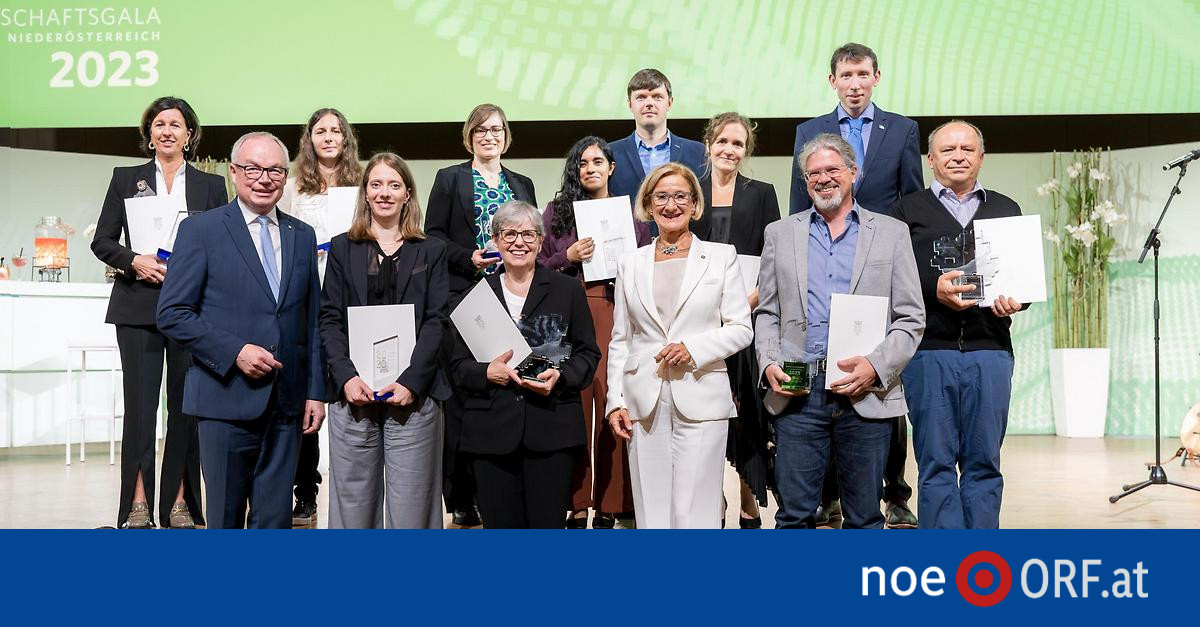Eleven scientists were honored on Wednesday evening at a gala event at the Grafenig Riding School (Krems District) by Governor Johanna Mikkel-Leitner (ÖVP) for their outstanding scientific achievements in Lower Austria. “We want research to be practiced, and research to help the country and its people,” says Mikkel Leitner.
The state’s deputy governor responsible for science, Stefan Pernkopf (ÖVP), stressed that it was important to put trust in science “at the centre” and combat scientific skepticism. Bernkopf promised to ensure state funding for future science and research despite difficult budget negotiations.
Scientific awards in the country
Science Prizes in Lower Austria are awarded annually in the categories of Recognition Prize, Recognition Prize and Future Prize. Future award winners receive between €1,500 and €3,000, recognition award winners receive €4,000 each, and honorary award winners receive €11,000 each.
Crows are as smart as little children
This year, one of the two coveted prizes, given to a body of scientific work of national importance, went to behavioral and cognitive researcher Thomas Bugnyar of the University of Vienna for his research on the intelligence of crows at the Heidelhof Research Station. (Baden region). Bogniar’s book “Crows: The Secret to Their Amazing Intelligence and Social Skills” was named Science Book of the Year 2023.
When it comes to specific tasks, crows have as high a level of intelligence as primates, and sometimes even chimpanzees, Bogniar explains. When applied to the human understanding of intelligence, this is comparable to certain abilities in two- and three-year-old children, the crow expert asserts. “This is not bad, after all, it is a bird whose brain is no larger than a walnut.”
Exciting discoveries in the monastery library
Writing expert Christine Glasner from the Austrian Academy of Sciences received second prize. Glasner looks in particular at the manuscript holdings in the libraries of Melk Abbey and Göttweig Abbeys. Glassner is not only concerned with the content, but also tries to identify the author, year of creation, setting, and client. “A medieval manuscript works differently from a modern book,” the expert explains: “A medieval manuscript does not have a title page or a table of contents by which you can immediately determine what it contains.”
Glasner’s most important finds include a handwritten fragment of the Nibelungenlied and fragments of an interesting medieval text, the content of which so far dates back to the 15th century. “This piece we found dates back to around 1300,” Glassner says. “Discoveries like this sometimes mean that literary history has to be rewritten a little.”
Awards of appreciation go to Klosterneuburg three times
Researchers from the Austrian Institute of Science and Technology (ISTA) in Klosterneuburg (region of Tulln) were particularly well represented in the Recognition Awards, which honor female scientists who have achieved professional recognition through their work without actually having a full body of work. Three out of four awards went to ISTA, including research on organic batteries (Stefan Froenberger), results on respiratory chain enzymes (Leonis Sazanov), and fundamental research in quantum physics (Maxim Serbin). In addition, Eva Oberger from the University of Natural Resources and Life Sciences Vienna (BOKU) at Tulane University and Research Center was honored for her findings on chemical and biological processes in the root zone of crop plants.
The “Future Science Award” for young talents went to Jisha Puthenpuril for her bachelor’s thesis on leukemia, Maria Beer for her master’s thesis on amphibian migration, Agnes Kim for her diploma thesis on research into extinct Croatian dialects of Marshfield, and Katherine Rosenfeld for her thesis on a new adhesive and Karen Tingler for her thesis on the use of robotics in primary schools.

“Total coffee aficionado. Travel buff. Music ninja. Bacon nerd. Beeraholic.”








More Stories
Coral Seeding: Artificial Insemination Makes Coral More Heat Tolerant
Fear, Anger, and Denial: How People Respond to Climate Change – Research
LKH Graz: Using radiation to combat heart arrhythmias